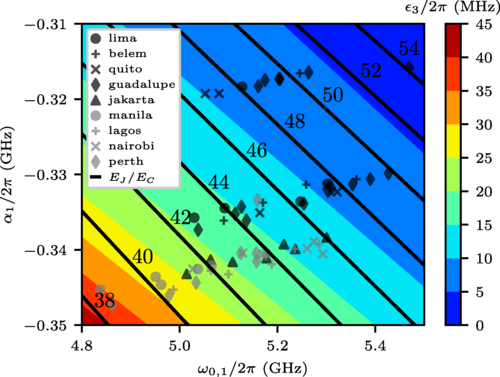Quantum computing typically uses qubits, but researchers from the University of Basel are exploring using qudits and d-dimensional building blocks, which can reduce error rates. They focus on transmon qudits, a type of superconducting qubit, and propose improvements to their measurement scheme to enhance distinguishability. The team also suggests using modified readout resonator drive frequencies to separate all qudit states. They compare their strategies with IBM Quantum hardware and propose adding two-photon transitions to the universal gate set of qudit gates to reduce execution time and duration of X-gate calibrations.
Introduction to Quantum Computing and Qudits
Quantum computing is typically based on qubits, which are realized on two-level subspaces of a larger physical Hilbert space. Various physical realizations of qubits have been proposed and implemented on different platforms, including superconducting qubits, trapped ions, cold atoms, Rydberg atoms, and electron spins in quantum dots. However, using qudits, or d-dimensional building blocks of quantum computation, can provide certain advantages. For instance, implementing an ancilla qubit within the second and third excited states of a qudit or transferring the population of the first excited state to the second excited state can decrease the error of identifying the ground state.
Transmon Qudits and Quantum Systems
Superconducting qubits are prominent building blocks of noisy intermediate-scale quantum systems. The most promising example is the transmon that can effectively be described as a quantum anharmonic electromagnetic oscillator. In this system, the two lowest-energy levels are identified as the qubit. Taking into account higher-lying transmon levels leads to a natural realization of a superconducting qudit. The smallest extension of the qubit is the qutrit, a three-level system. Qutrits have been used to implement a Toffoli gate with a significantly lower number of elementary gates compared with a realization based on two-level systems.
Measuring Qudit States
If one is interested in measuring a qudit state, properly classifying all levels involved is needed. In setups which do not provide time-resolved data, such as the current IBM Quantum devices, other methods of separating qudit states have to be employed. The strategies described involve exciting the qudit-resonator system at readout drive frequencies other than the default frequency. At the default frequency, the distinguishability of the ground state and first excited state is maximized, whereas using the adapted frequencies aims to optimize distances between different pairs of qudit states.
Proposed Improvements for Transmon Qudit Measurement
In this paper, Tobias Kehrer, Tobias Nadolny, and Christoph Bruder from the Department of Physics at the University of Basel propose and evaluate improvements in the measurement scheme of transmonqudit states by enhancing their distinguishability. To optimize the readout, they determine the measurement errors from the assignment matrix whose entries denote the probability of classifying a measurement outcome to a state, even if another state was prepared. The strategies proposed are based on modified readout resonator drive frequencies that consider the separation of all qudit states. These strategies include a single-frequency as well as a multi-frequency readout scheme.
Comparison with IBM Quantum Hardware
For a ququart, the four lowest states of a qudit, the researchers compare the proposed strategies in simulation and show that depending on hardware parameters, both strategies can be beneficial. They furthermore compare the model to a measurement of the drive-frequency-dependent resonator states on a current IBM Quantum device. The data for this research were obtained on May 23, 2023, and July 7, 2023. The researchers propose to add two-photon transitions to the universal gate set of qudit gates, which they show will reduce the execution time of certain qudit circuits and the duration of X-gate calibrations.
In the article “Improving transmon qudit measurement on IBM Quantum hardware,” published on January 12, 2024, authors Tobias Kehrer, Tobias Nadolny, and Christoph Bruder present their research findings. The paper can be accessed through its DOI reference: https://doi.org/10.1103/physrevresearch.6.013050.

